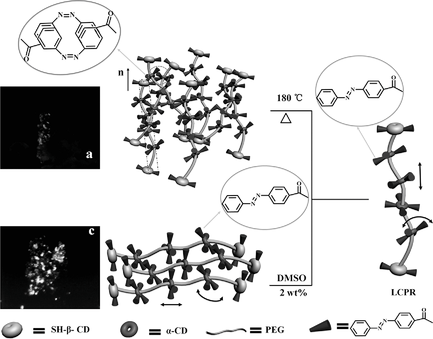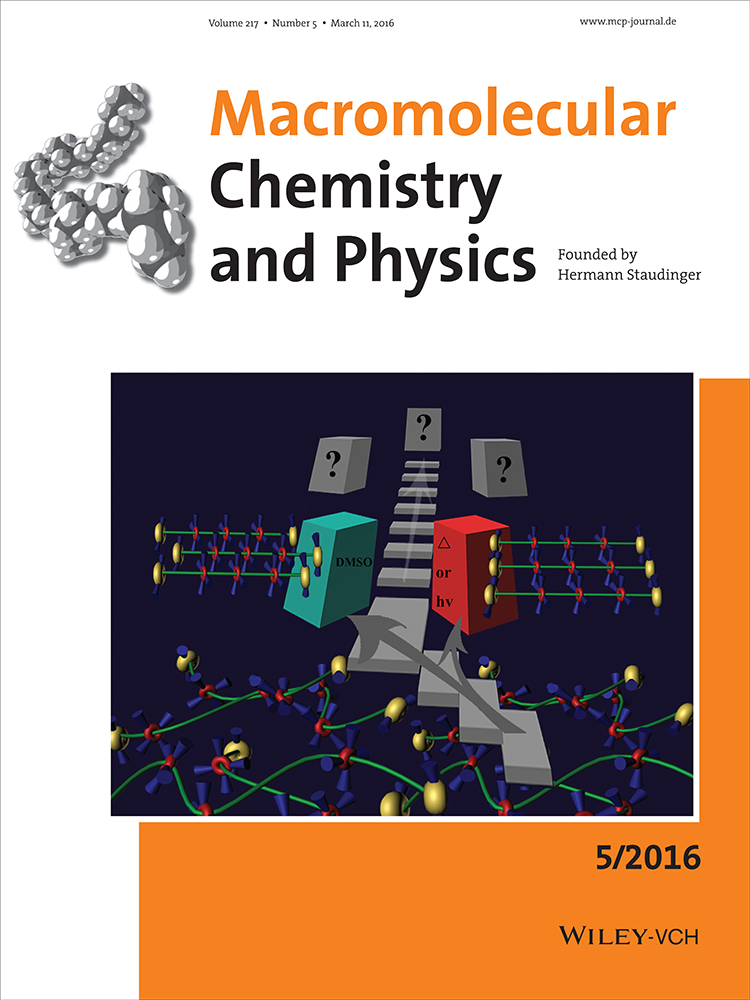The Synthesis and Characterization of Spacer-Free Liquid Crystal Polyrotaxane by Virtue of the Mobility of Threaded α-Cyclodextrins
Abstract
A novel spacer-free liquid crystalline polyrotaxane (LCPR) is synthesized by directly grafting 4-phenylazobenzoyl chloride onto the hydroxyl of threaded α-cyclodextrin (α-CD) as the side-chain. It is found that LCPR can form nematic LC phase above 180 °C or under the concentration of 5–0.2 wt% in dimethyl sulfoxide (DMSO) solution. The mechanisms of formation of thermotropic and lyotropic LC phase are proposed, respectively, which show the mobility of both threaded α-CDs and substituted azo-mesogens is responsible for the formation of LC phase. This mechanism is further demonstrated by the formation of crystalline phase under UV radiation, which is characterized by polarizing optical microphotograph and UV measurements.





